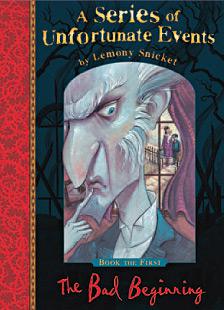ELEMENTARY

"Spark" by Kallie George
Who is Spark the dragon and when will he be able to control his flame? Read to find out! This book is a gentle reminder to little children that there is a perfect timing for everything.
Discussion Question: Has there been a time in your life when you had to be patient and wait for the perfect timing?
SOL(s):
Reading:
K.9 The student will demonstrate comprehension of fictional texts.
b) Relate previous experiences to what is read.
d) Begin to ask and answer questions about what is read.
Science:
K.7 The student will investigate and understand basic needs and life processes of plants and animals
b) plants need nutrients, water, air, light, and a place to grow to survive
Activity: The teacher will bring seeds to class. After reading this book and discussing the question, have the students plant a seed and care for it over the next couple months. When the plant begins to grow, you could talk about patience again and how there is a perfect time for everything. After the seed has sprouted, the students can take the plant home.

"The Foot Book" by Dr. Seuss
What kind of feet will this book get into? Read to find out!
Discussion Question: Can you think of any other types of feet that could have been in the book?
SOL(s):
Reading:
Demonstrate an understanding of frequently occurring verbs and adjectives by relating them to their opposites (antonyms).
Math:
K.10 The student will compare two objects or events, using direct comparisons or nonstandard units of measure, according to one or more of the following attributes: length (shorter, longer), height (taller, shorter), weight (heavier, lighter), temperature (hotter, colder).
Activity: The teacher will separate the students into pairs. The students will take turns tracing each others foot. When the students are finished tracing their foot, they are to have a discussion about which objects are bigger or smaller. Ex: your foot or en elephants foot, your foot or the teacher's foot, your foot or your hand, etc.
/about/wild-things15-56a140435f9b58b7d0bd74e6.jpg)
"Where the Wild Things Are" by Maurice Sendak
Who is Max? How does he end up in a jungle with all of these wild animals? Read the book to find out!
Discussion Question: What do you think the magic trick was that Max said to make all the wild things obey him and make him the King?
SOL(s):
Reading:
2.8 The student will read and demonstrate comprehension of fictional texts.
a) Make and confirm predictions.
c) Ask and answer questions about what is read.
f) Identify the problem and solution.
i) Draw conclusions based on the text.
Civics:
2.11 The student will explain the responsibilities of a good citizen, with an emphasis on
d) demonstrating self-discipline and self-reliance
Activity: The students will pretend that they are losing their temper. Then, they are to draw a picture of what their imaginary world would look like.
MIDDLE

"Charlotte's Web" by E.B. White
Wilbur, the pig, was born the runt of his litter and is set out to be killed, but is saved by a girl named Fern. When he is too big for Fern to care for, he gets sold to her uncle, Homer. Wilbur and Charlotte, a spider, learn the meaning of friendship and care for one another. Eventually, Charlotte spares Wilbur from death. But how? Read to find out!
Discussion Question: If you were Charlotte, what would you have written in your web about Wilbur?
SOL(s):
6.5 The student will read and demonstrate comprehension of a variety of fictional text.
a) Identify the elements of narrative structure, including setting, character, plot, conflict, and theme.
b) Make, confirm, and revise predictions.
d) Describe cause and effect relationships and their impact on plot.
e) Use prior and background knowledge as context for new learning.
f) Use information in the text to draw conclusions and make inferences.
h) Identify the main idea.
Activity: Read part of the book then show clips from the movie. After finishing both parts, have them do a compare and contrast of the differences between the two.
MIDDLE & HIGH SCHOOL

"The Series of Unfortunate Events" by Lemony Snicket
Three children have lost their parents in a terrible fire. Mr. Poe takes them to live with their nearest relative, Count Olaf. However, they are unsure about him and the cruel tasks that he makes the children do; so they escape. In each book they are to live with a different guardian. Read the series to find out where the children end up!
Discussion Question: How does Lemony Snicket connect to this story?
SOL(s):
Reading
6.5 The student will read and demonstrate comprehension of a variety of fictional texts, narrative nonfiction, and poetry.
a) Identify the elements of narrative structure, including setting, character, plot, conflict, and theme.
b) Make, confirm, and revise predictions.
d) Describe cause and effect relationships and their impact on plot.
e) Use prior and background knowledge as context for new learning.
i) Identify and summarize supporting details.
j) Identify and analyze the author’s use of figurative language.
l) Use reading strategies to monitor comprehension throughout the reading process.
Activity: After reading and discussing this series, the teacher will have the students go to: http://www.lemonysnicket.com/activities/ and complete Trivial Trivia, Laborious Letter Writing, Frantic Fill-in-the-blank, Treacherous True or False, and Terrible Trivia. They are to write their answers and the letter on their own sheet of paper.
Comments (0)
You don't have permission to comment on this page.